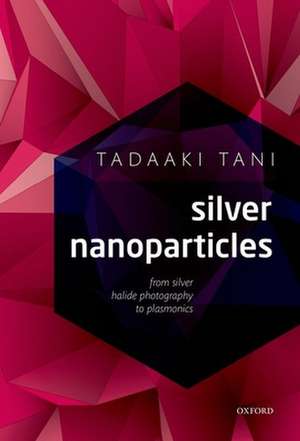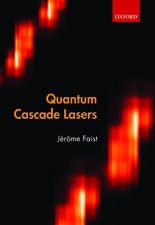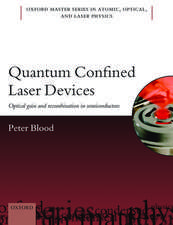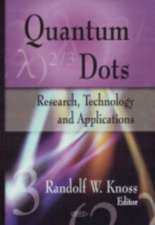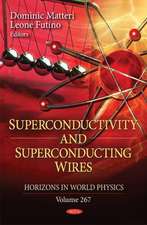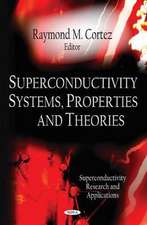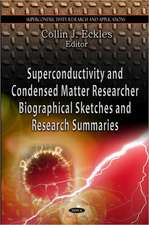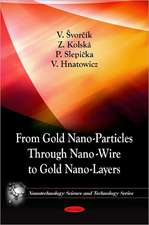Silver Nanoparticles: From Silver Halide Photography to Plasmonics
Autor Tadaaki Tanien Limba Engleză Hardback – 17 sep 2015
Preț: 730.86 lei
Preț vechi: 1049.92 lei
-30% Nou
Puncte Express: 1096
Preț estimativ în valută:
139.89€ • 152.01$ • 117.59£
139.89€ • 152.01$ • 117.59£
Carte tipărită la comandă
Livrare economică 10-16 aprilie
Preluare comenzi: 021 569.72.76
Specificații
ISBN-13: 9780198714606
ISBN-10: 0198714602
Pagini: 218
Dimensiuni: 182 x 247 x 15 mm
Greutate: 0.57 kg
Editura: OUP OXFORD
Colecția OUP Oxford
Locul publicării:Oxford, United Kingdom
ISBN-10: 0198714602
Pagini: 218
Dimensiuni: 182 x 247 x 15 mm
Greutate: 0.57 kg
Editura: OUP OXFORD
Colecția OUP Oxford
Locul publicării:Oxford, United Kingdom
Recenzii
This book is important because it gives an overview of this field drawn from the history of photography and how it can be applied to emerging technologies such as catalysis, photovoltaics, and plasmonics. The author has worked in the photography industry for nearly 50 years and has a deep knowledge that is reflected in this book ... useful reference for researchers and graduate students
This book is unique in approaching the science and technology in plasmonics from the unprecedented viewpoint and should be recommended to those, who are anxious to promote the research on plasmonics with metal nanoparticles. (translated from Japanese)
This book offers invaluable insights into understanding of the synthesis, properties and applications of silver nanoparticles. Great wealth of knowledge accumulated over several decades for silver halides is bridged to silver nanoparticles by the expert in both fields for the benefits of a wide range of researchers in nanoparticles and plasmonics.
This book offers a comprehensive review of silver and silver halide nanomaterials, including their preparation, optical properties, and their unique applications in photography, plamonics, and catalysis. It is also interesting to see the connection between silver and silver halide in these aspects. It is a very useful reference book on these two types of functional nanomaterials.
This book is unique in approaching the science and technology in plasmonics from the unprecedented viewpoint and should be recommended to those, who are anxious to promote the research on plasmonics with metal nanoparticles. (translated from Japanese)
This book offers invaluable insights into understanding of the synthesis, properties and applications of silver nanoparticles. Great wealth of knowledge accumulated over several decades for silver halides is bridged to silver nanoparticles by the expert in both fields for the benefits of a wide range of researchers in nanoparticles and plasmonics.
This book offers a comprehensive review of silver and silver halide nanomaterials, including their preparation, optical properties, and their unique applications in photography, plamonics, and catalysis. It is also interesting to see the connection between silver and silver halide in these aspects. It is a very useful reference book on these two types of functional nanomaterials.
Notă biografică
Tadaaki Tani received his doctorate in Engineering from the University of Tokyo in 1968, and went on to prestigious careers in the photoraphic industry and in academia. He worked on silver halide photography in the laboratories of the Fujifilm Corporation (1968-2010), and as Lecturer and Guest Professor at the Tokyo Institute of Technology (1994-2008). He was also President of the International Committee for imaging Science (1997-2006), and President of the Society of Photograph and Imaging of Japan (2002-2006). He has won many awards for his work, including the Berg Prize of the International Committee for Imaging Science (2010).
